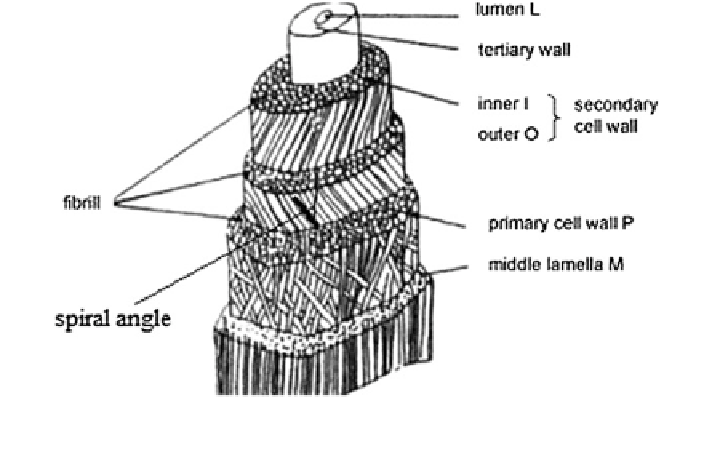Civil Engineering Reference
In-Depth Information
Fig. 5 Schematic structure of a fibre; adapted from (Dufresne
2008
; Rong et al.
2001
; Pietak
et al.
2007
) with kind permission of Elsevier, 2013
properties. Understanding the effects of hierarchical structure can guide the syn-
thesis of fibre-reinforced materials with properties which are tailored for specific
applications. Figure
5
shows that each fibre is consisted of a primary wall, a
secondary wall, a lumen and middle lamellae. The central region of the fibre is the
hollow lumen which transports water and nutrients to the plant or vegetable. The
cell wall has four layers which perform rigidity functions depending on the way
the cellulose microfibrils are arranged. Each layer has characteristics variations in
morphology and composition (Pietak et al.
2007
). The microfibrils in most natural
fibres orient themselves at an angle to the fibre axis called the microfibril angle,
see the spiral angle in Fig.
5
. A weak correlation between strength and cellulose
content and microfibril or spiral angle is found for different vegetable fibres.
Roughly speaking, fibre strength increases with increasing cellulose content and
decreasing spiral angle with respect to fibre axis (Dufresne
2008
). In nature, the
hierarchical structure is primarily driven by chemistry of specific interchain and
intrachain interactions (NMAB
1994
). In the following subsection, a brief
description of some of the basic and important chemical components for vegetable
fibres is presented.
3.2 Chemical Composition
The chemical composition of vegetable fibres varies greatly from one type of
vegetables and one vegetable to another depending on age, environment, season
and extraction process. The principal constituents are cellucose, hemicellucose and

